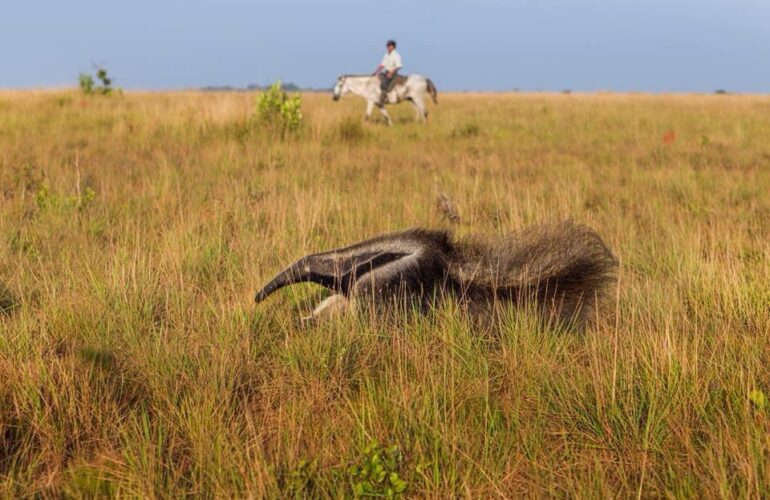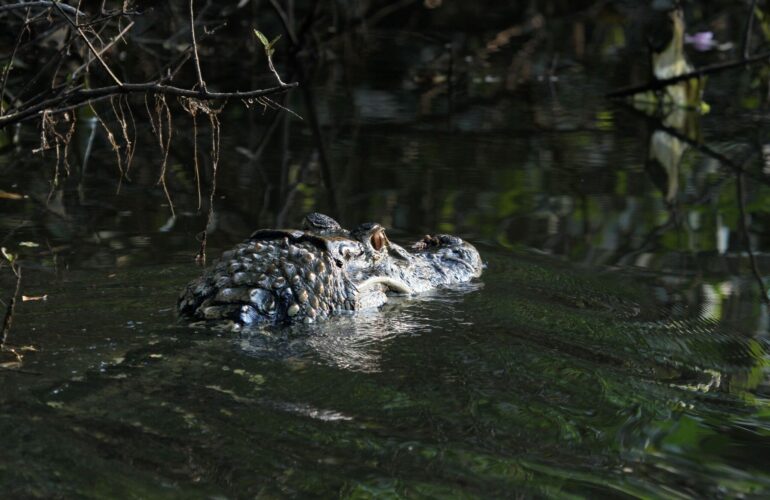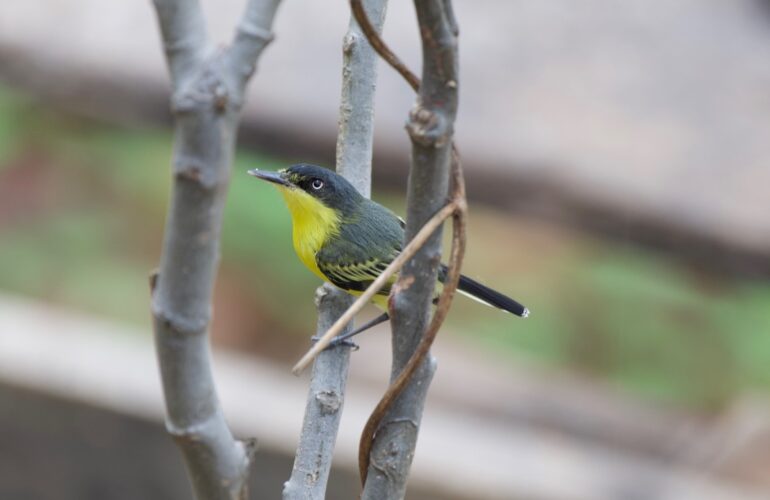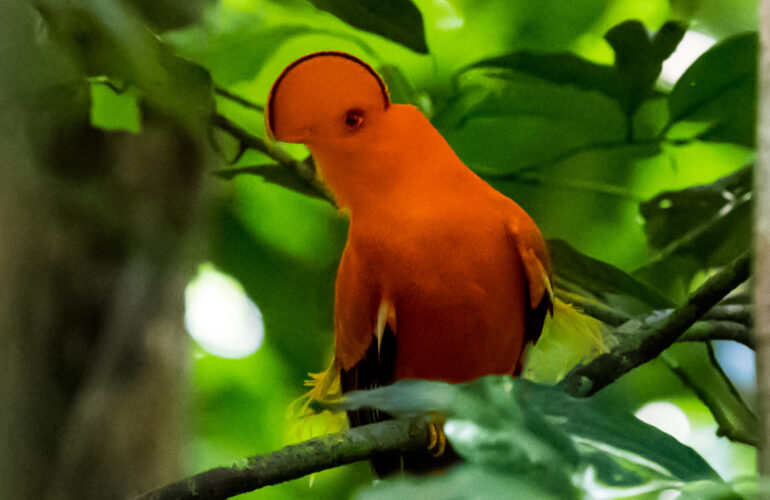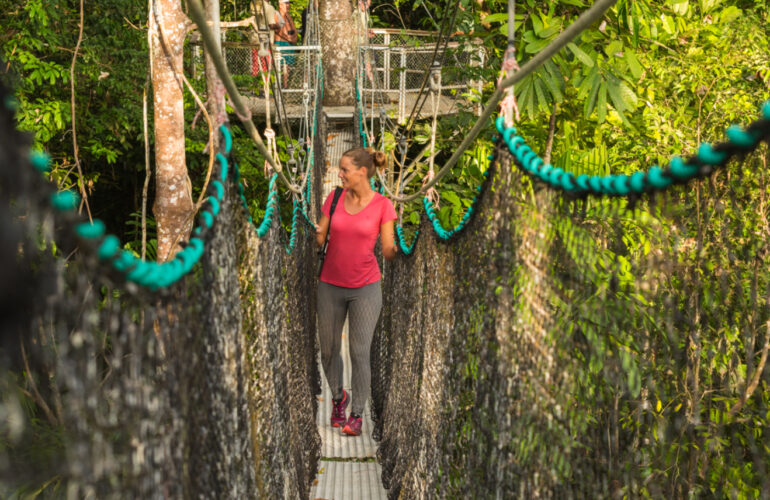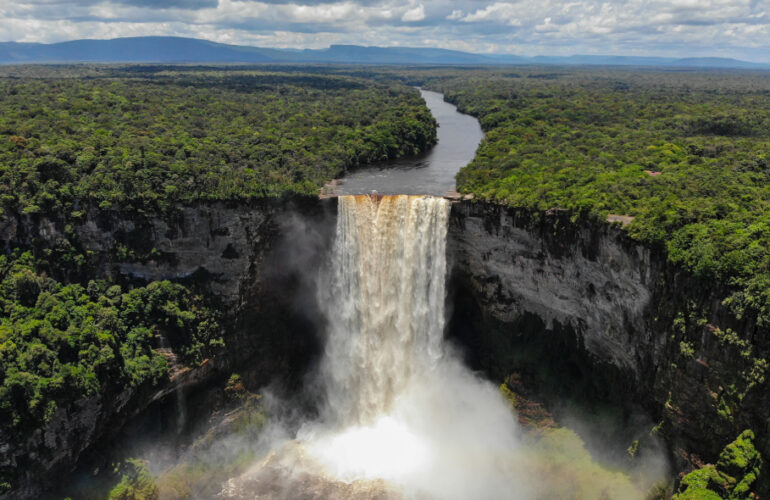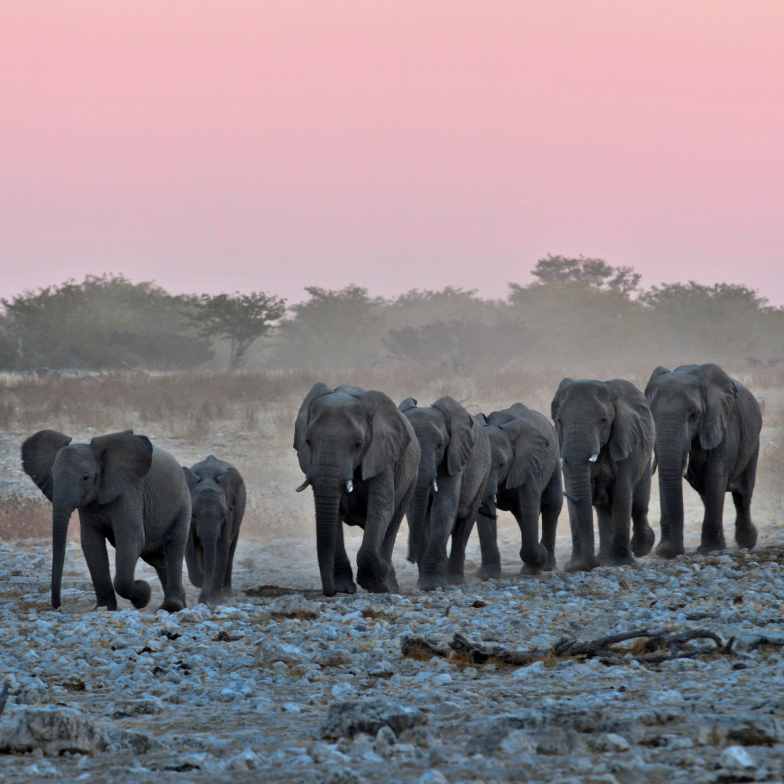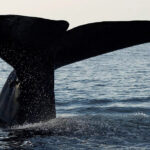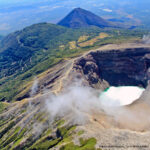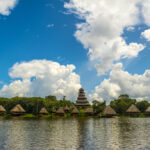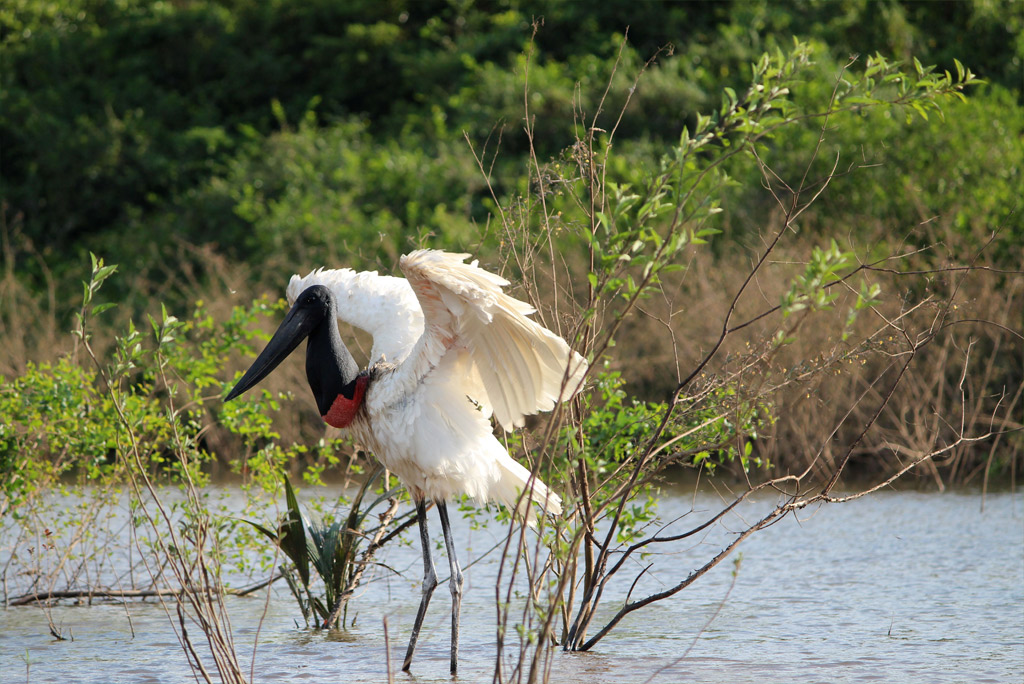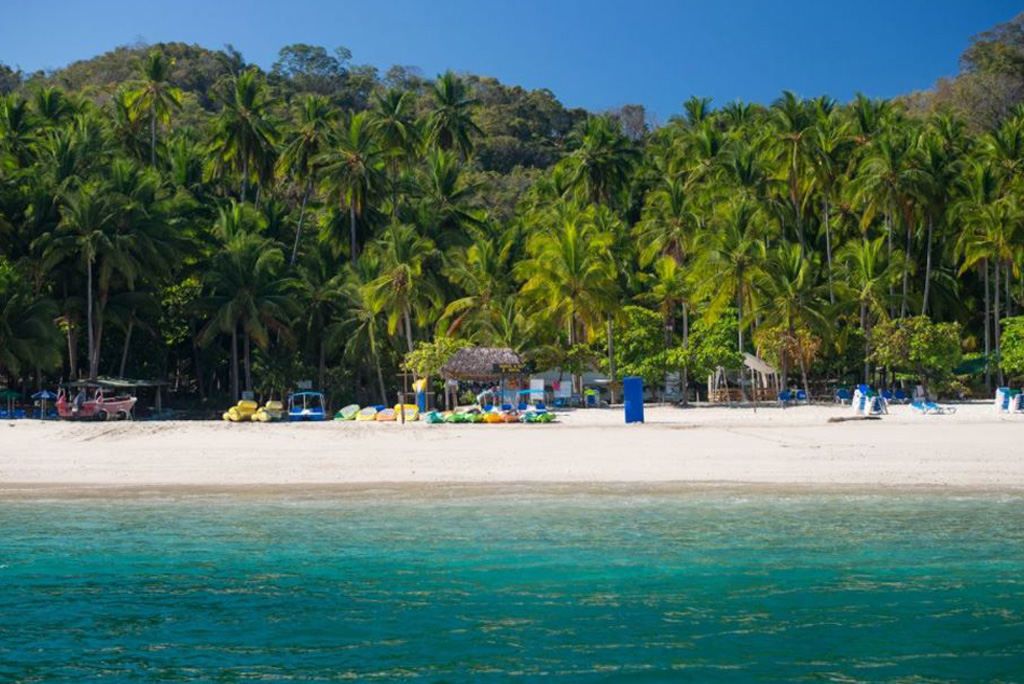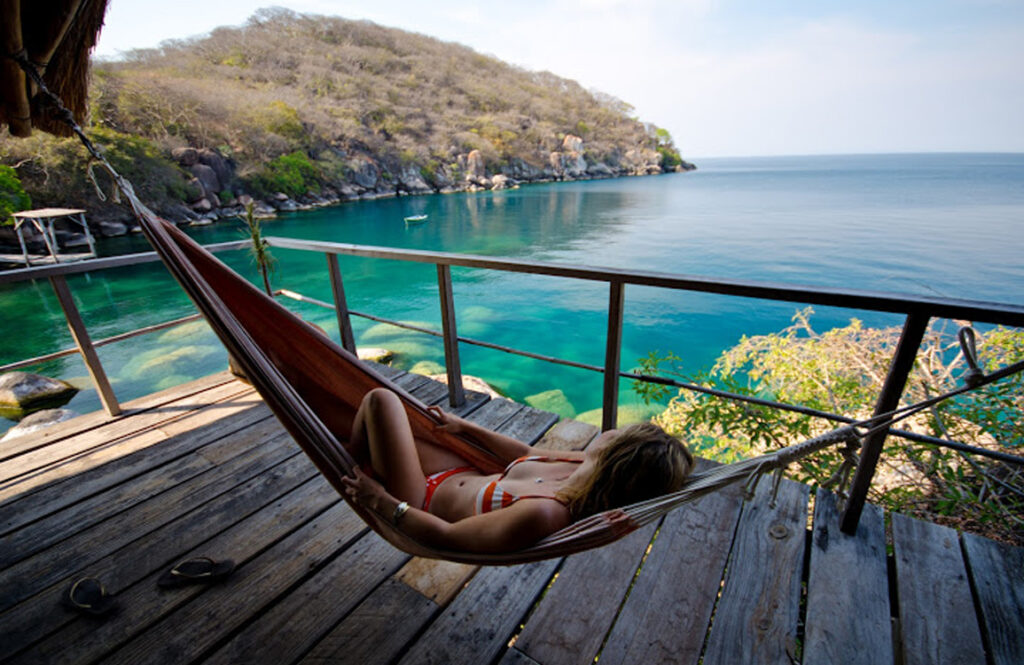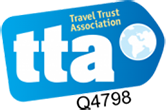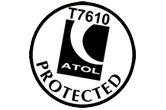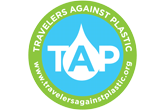Georgetown will take you slowly back in time as we meander through its lively markets with a local chef. Visit Keieteur falls, home of the elusive miniature golden frog and giant bromeliads-a bird-watchers paradise. Iwokrama reserve is perfect jungle hiking territory and a key destination for jaguar sightings. 30m Jungle walkways allow a birds-eye view of the forest canopy. From this tree top vantage you can sometimes see Red Howler and Black Spider Monkeys. At ground level giant river otters play hard to spot as their silky fur blends in with their river reflections. Stay in the spectacular riverside setting of Rewa Village in the North Rupununi and experience subsistence living at it best. The community of approximately 220 persons is predominately Macushi families of the Wapashana and Patamona tribes.
TYPOLOGIES
Honeymoon
DIFFICULTY
Medium
MIN. AGE
16 Years
£ 7195
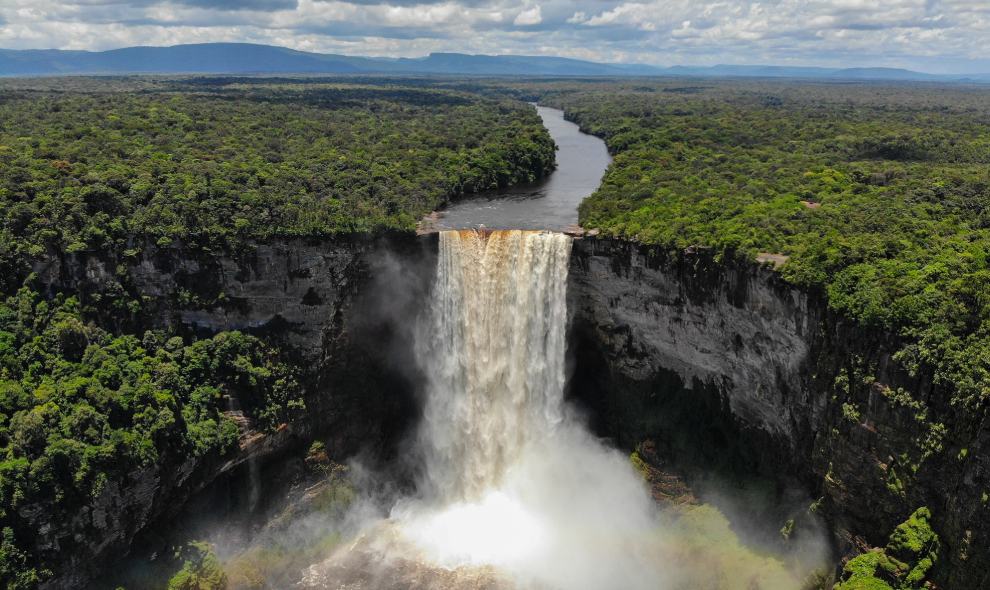
Truly Explore Nature
Price £7,195 / $8,740
Based on 2 pax. Excludes international flights. (Single Supplement Applies £795 / $999)
Upcoming Group Departures
2024: 04-Apr, 11-Aug, 22-Aug, 29-Aug, 19-Sep, 28-Nov
2025: 20-Feb, 23-Oct, 20-Nov
Tailormade Departures
Speak to our travel designers - All of our trips can
be designed to suit you and your dates of travel.
Day by Day
Pickup and transfer from Cheddi Jagan International Airport to Georgetown and your selected hotel.
This morning we make an early start to have breakfast at one of the local stands with our host, guide and culinary master, Chef Delven Adams who will guide us around Bourda Market, the largest of the four markets in Georgetown. We will start our tour at the Guyana Shop which has all the locally packaged products, before heading over to the market where we will meet some of the vendors who Chef buys from daily.
We will visit the fish market, the meat section and the haberdashery section - where one can find anything you can think of from thread to bolts of all kinds of fabric. A stop at the bush medicine stalls is always educational. Heading outside you can see, touch and taste a variety of local fruits and vegetables unique in this part of the world. Chef will make his purchases with your suggestions of what you would like to try and will then head home to start preparing while we continue on a tour of the city of Georgetown with an experienced guide who will give you the history, rumour and facts on Georgetown and its citizens.
During your visit to Georgetown, there are a number of interesting sites that should not be missed such as the National Museum, which contains a broad selection of our animal life portrayed in taxidermy in beautiful old glass cases, and the Walter Roth Museum of Anthropology, which houses a wonderful collection of artefacts and explains history and lifestyle of our indigenous peoples.
On this mix of vehicle and walking tour, enjoy the views of other historic buildings along this promenade such as the Public Library, City Hall, the Victoria Law Courts, St. Andrews Kirk, Stabroek Market - once described as a “bizarre bazaar, and St. George’s Cathedral, which is one of the world’s tallest free-standing wooden buildings.
We will also visit a pond in the National Park to feed the endangered West Indian Manatees.
After our city tour, we will go to the Backyard Café for lunch. This, as the name suggests, is a backyard that Chef has turned into an exclusive little hidden gem of a restaurant. If you are interested, Chef will welcome you to join him as he prepares a wonderful meal prepared from the fruits and vegetables we bought in the market in the morning. Or you can just sit under the arbour and sip unique blends of juice or enjoy a cold beer, while taking in the sounds and smells of a delicious meal in the making. Once he is ready, we will start eating our way through the courses, remember to pace yourself as you will want to try it all.
Optional Service:
Rum Tasting – El Dorado
Your rum experiences incudes:
- Rum-tasting guide
- Single shots of El Dorad 7-year, 12-year, 15year, 21-year-old award-winning rums
- Rum-tasting snack
- Your own ministure bottle of El Dorado rum and El Dorado rum glass as a souvenir of your experience
- VAT
Details at the end of the itinerary
0545hrs pickup and transfer to the extensive and beautiful Georgetown Botanical Gardens where, if we are lucky, we will have views of the Blood-colored Woodpecker. This colorful Veniliornis is found only in the Guianas and even there almost wholly limited to the narrow coastal plain. The gardens host Snail Kite, Gray Hawk, Pearl Kite, Carib Grackle, Red-bellied and Red-shouldered Macaws and the rare festive parrots. We will walk on trails in the back of the gardens and may see Yellow-chinned Spinetail, Black-crested Antshrike, Silver-beaked Tanager, Buff-breasted Wren, Golden-spangled Piculet and Ashy-headed Greenlet. You may even want to take a break from birding to feed some manatees in one of the nearby ponds.
Return to your hotel.
Pickup and transfer to Eugene F. Correia International Airport.
From the Eugene F. Correia International Airport take a scheduled flight over the Demerara and Essequibo Rivers and hundreds of miles of unbroken tropical rainforest to land at Kaieteur Falls, the world’s highest free-falling waterfall.
Kaieteur which was first seen by a European on April 29, 1870 is situated in the heart of Guyana on the Potaro River, a tributary of the Essequibo. The water of Kaieteur flows over a sandstone conglomerate tableland into a deep gorge - a drop of 741 feet or 5 times the height of Niagara Falls.
There are no other falls in the world with the magnitude of the sheer drop existing at Kaieteur. Amerindian legend of the Patamona tribe has it that Kai, one of the tribe’s chiefs (after whom the falls is named), committed self-sacrifice by canoeing himself over the falls. It was believed this would encourage the Great Spirit Makonaima to save the tribe from being destroyed by the savage Caribishi.
Kaieteur supports a unique micro environment with Tank Bromeliads, the largest in the world, in which the tiny Golden frog spends its entire life and the rarely seen Guiana Cock- of-the-rock nesting close by. The lucky visitor may also see the famous flights of the Kaieteur Swifts or Makonaima Birds which nest under the vast shelf of rock carved over millions of years by the black water of the Potaro River.
Pickup and transfer to Eugene F. Correia International Airport.
Board schedule flight for journey over hundreds of miles of tropical rainforest to land at Fair View Airstrip.
(Check in time 0730hrs, Departure 0900hrs)
Pick up from Fair View airstrip and transfer to Iwokrama River Lodge.
Explore the trails around the lodge with an Iwokrama Ranger. Iwokrama is home to many bird species including Capuchin bird, Black Nunbird, Chestnut-rumped Woodcreeper, Amazonian Antshrike, Brown-bellied Antwren, Spot-tailed Antwren, Todd’s Antwren, Spotted Puffbird, Green Aracari, Guianan Toucanet, Guianan Red Cotinga, Pompadour Cotinga, Rufous-crowned Elaenia, Bronzy Jacamar, Chestnut & Waved Woodpecker, Gray Antbird, and Strong-billed Woodcreeper. Three other Neotropical species in the Iwokrama forest of high interest are White-winged Potoo, Rufous Potoo, and Rufous-winged Ground-cuckoo.
The forest is also home to many mammals and you may see Red-rumped Agouti and various species of monkey including Red Howler, Black Spider and Wedge-capped.
After dark we’ll set out on the river, in hope of finding one or another of its four species of caiman, and listen for night birds such as Spectacled Owl, White-winged Potoo, Rufous Potoo, Long-tailed Potoo, Zigzag Heron or Blackish Nightjar. Using our flashlights we will look for the eyeshine of snakes including Cox boa, tree frogs and if lucky maybe some mammals.
The Iwokrama Rainforest is a vast wilderness of one million acres. This protected area was established in 1996 as the Iwokrama International Centre for Rainforest Conservation and Development. The Iwokrama Forest is in the heart of one of four last untouched tropical forests of the world - The Guiana Shield of North-Eastern South America. Iwokrama was established as a living laboratory for tropical forest management.
From research to business, Iwokrama ensures local economic and social benefits from forest use and conservation. The forest is in the homeland of the Makushi people, who have lived here and used the forest for thousands of years.
The Iwokrama River Lodge is set overlooking the Essequibo River. Accommodation is offered in eight spacious timber cabins with en suite and verandas overlooking the river. Electricity is provided by a combination of solar and diesel generator systems, and wireless internet access is provided for free in the main building. Meals are served buffet-style in the Fred Allicock dining hall.
Making an early start, we’ll embark on the Essequibo and circumnavigate nearby Indian House Island, before returning to the River Lodge for breakfast.
Leave the lodge by boat, birdwatching along the way, for the hike to Turtle Mountain. A well maintained trail winds through the forest before an exhilarating climb up the mountain to its summit at 935ft (approx. 360m). The effort is more than worth it for the breathtaking views over the forest canopy when you get there and chances of Green Aracari, White Bellbird or a fly-by of one of five types of eagles. This trail is also a great location for seeing Black Spider and Red Howler monkeys. If you think this hike may be too strenuous you can take an alternative boat trip to Stanley Lake to search for Giant River Otters and Black Caiman.
As the afternoon cools you set out on a boat trip to visit Kurupukari Falls to see the Amerindian petroglyphs (dependent on the water level).
Later this afternoon take drive through the forest in an area known for Jaguar sightings. This elusive cat is on the top of everyone’s wildlife list and whilst not guaranteed there is a reasonable chance you could be fortunate and have a sighting. Apart from Jaguar there are other wildlife opportunities along this corridor.
Explore the trails around the lodge with an Iwokrama Ranger.
Transfer by 4 x 4 along the trail that is one of the best places to see the elusive Jaguar. No promises, but many have been lucky! Along the road, we will watch for the myriad of bird species that frequent the forest edge. This road is the only north – south access in Guyana and links the country to Brazil. Even so traffic is only very occasional and wildlife is often seen along the road. The journey concludes at the Atta Rainforest Lodge, home of the Iwokrama Canopy Walkway.
The Iwokrama Canopy Walkway is situated near the southern boundary of the Iwokrama Reserve in central Guyana. The walkway has four suspension bridges leading to three platforms, the highest of which is over 30 metres above the ground.
Another area where we will want to spend some time is the clearing around the lodge, as this is one of the best places to see another of Guyana’s “must see” birds, the Crimson Fruitcrow. The clearing is also a reliable site for Black Curassow as there is a large and growing family party which has become habituated to people and regularly passes through the clearing.
Atta Rainforest Lodge is 500 metres from the base of the Iwokrama Canopy Walkway, offering comfortable private-room accommodation with ensuite bathrooms, delicious home-cooked meals, and traditional Amerindian hospitality. The communal building houses the bar, dining area and kitchen and is open sided with views across the gardens to the towering forest, which completely surrounds the lodge. Hammocks and outdoor benches enhance the lovely gardens which include varieties of heliconias that attract over ten different hummingbirds, close enough for the perfect photo.
Before dawn we will return to the canopy where we can birdwatch easily and may see Rufous-throated Sapphire, Green Aracari, Pygmy Antwren and Guianan Streaked-Antwren. With some luck Guianan Toucanet, Pompadour Cotinga, Buff-cheeked Greenlet and a host of crown specialists may come within our view. From this tree top vantage you can sometimes see Red Howler and Black Spider Monkeys.
Apart from the Iwokrama Canopy Walkway itself you can enjoy wildlife and birdwatching walks on the trails around the area. Many bird species, stunning insects, noisy amphibians, and playful primates make the surrounding forest their home. Deer, Tapir and agouti are also regular visitors to the lodge. Serious birders will want to search the undergrowth for the rarely seen Rufous-winged Ground-cuckoo.
As darkness falls on the walkway, you may see the White-winged Potoo. Night walks are also possible and something interesting or new always seems to pop on to the scene including one of the six different cats to be found along the transnational road near the lodge.
Welcome the dawn chorus from the canopy walkway and then return to the lodge for breakfast before departure.
Transfer from Atta Rainforest Lodge through the rainforest to Corkwood in the Iwokrama Forest. Here there is a comparatively short trail to hopefully see the amazingly brilliant Guianan Cock-of-the-rock. This trail is through interesting and pristine rainforest and the guides can explain how the plants are used for medicine and other purposes. Continue to Kwatamang Landing.
Enjoy lunch at Rock View Lodge before continuing your journey.
Travel by boat along the Rupununi River with opportunities to see wild Giant River Otters and Black Caiman. You will pass locals fishing and bathing in the river until you reach the Rewa River and the Amerindian community of Rewa. Journey is approximately 50 miles by river and can be as short as 2 hours and as long as 4 hours depending on the water level.
Rewa Village is located where the Rewa River runs into the Rupununi River in the North Rupununi. The surrounding area is rainforest, mountains and oxbow lakes and teeming with wildlife birds and fish. The community of approximately 220 persons is predominately Macushi with a few families of the Wapashana and Patamona tribes. Villagers practice subsistence farming, fishing and hunting with little opportunity for cash employment.
In 2005 the community constructed the Rewa Eco-lodge so that they could establish a sustainable eco-tourism business that is owned and operated by the village. The lodge itself is situated on the river bank overlooking the Rewa River with views down river to the Rupununi River. Along the river bank tables and benches offer a relaxing location to enjoy the river. The grassed clearing in the rainforest houses three benabs and six cabins. The largest benab is the kitchen and dining area, with an outlook to the river. Accommodation is in two benabs each with two bedrooms and a large patio with hammocks for relaxing with shared bathrooms; and six individual cabins.
Later this afternoon take a short boat ride from the lodge to the opposite bank on the Rupununi River. Hidden after a five-minute walk from the boat is a lovely oxbow lake. The magical setting is enhanced with a wooden deck out over the pond, allowing close-up views of the Victoria amazonica, the world's largest waterlily and the national flower of Guyana. The leaves that float on the water grow up to 3 metres in diameter with a submerged stalk of 7 to 8 metres. The flowers which bloom at dusk are white on the first night. By the third night, they change colour to pink and also change to a male flower. The golden colours across the pond at dusk combined with birds coming into roost provide a lovely nature experience.
Enjoy breakfast at dawn overlooking the river.
Then head out by boat along the Rupununi River, into an oxbow lake to begin a hike up Awarmie Mountain. The climb is steep in a few sections but in general not too difficult. Along the way, you may see lots of birds and perhaps good close up views of Black Spider Monkeys.
There is good birding along the trail with White Bellbirds calling both from the scrubby woodland at the beginning of the trail and again from the forests far below you when reach the summit. Other species you may see include Ornate Hawk-eagle, Black Curassow, Red-fan Parrot, Guianan Puffbird, Todd’s Antwren, Spotted Tanager and Bay-headed Tanager. The area also has a high density of macaws including Scarlet, Blue-and-yellow and Red-and-Green Macaws.
There is a small plateau on the top of the mountain and in one direction, there are uninterrupted views back to the Rupununi River, some patches of Savannah and across to the distant Kanuku Mountains. In the other direction, there is a near vertical drop of at least 200m and the view is across great swathes of undisturbed forest to the distant Iwokrama Mountain and much closer, Makarapan Mountain. Makarapan is the oldest mountain in South America if not the world clocking in at an amazing two thousand million years old.
Lunch at the bottom of the mountain. After lunch return to the lodge.
This afternoon take a boat up the Rewa River and then a 15-minute hike to Grass Pond. This pond or lake is about 3kms long and is a beautiful setting with Victoria amazonica. It has a good population of Arapaima, (reportedly the highest density in Guyana) the largest scaled freshwater fish in the world and you can also fish for Peacock Bass. During a late afternoon visit, you may see Brown Capuchin monkeys or Capybaras. Birds likely to be seen include Limpkin, Wattled Jacana, Black-collared Hawk, Green Kingfisher and Guianan Puffbird. As dusk settles, watch the flower of the Victoria amazonica bloom.
In the afternoon travel up the Rewa River to a location known as Seawall. This rock formation is a great place to fish or take in the beauty of the location. Visit sand banks where river turtles come to lay their eggs. Along the river banks you may see red howlers, squirrel and brown capuchin monkeys.
We continue up river and then hike through the rainforest to area where we can observe the Goliath bird-eating spider, the largest spider in the world by mass and size. The practice of calling theraphosids "bird-eating" derives from an early 18th-century copper engraving showing one eating a hummingbird.
These spiders can have a leg span of up to 28 cm (11 in), a body length of up to 11.9 cm (4.7 in) and can weigh up to 175 g (6.2 oz). Despite its name, it is rare for the Goliath bird-eating spider to actually prey on birds. In the wild, they have been observed feeding on rodents, frogs, toads, lizards and even snakes.
After breakfast say goodbye to staff and newfound friends and board boat for travel along the Rupununi River to Kwatamang Landing.
Travel by boat along the Rupununi River to Kwatamang Landing.
Transfer from Kwatamang Landing through the rainforest to Genip Landing, stopping enroute at Pakaraima Mountain Inn.
Continue on to the Pakaraima Mountain Inn, which sits in the Aranaputa Valley, just outside the village of Yakarinta. Enjoy a home-cooked lunch on the veranda along with fascinating stories from local character and host, Charlie De Freitas.
From Ginep Landing we take a boat trip on the Rupununi River to Karanambu Lodge. Depending on the river level, this trip offers an excellent opportunity to look for Giant Otters as there are several family groups which live along this stretch of the Rupununi River.
Karanambu, a 110-square mile former cattle ranch located in the North Rupununi, was the home of the late Diane McTurk, conservationist and a world-renowned expert on giant otters. Karanambu encompasses savannah, marshy ponds, riparian forest, and a 30-mile stretch of the Rupununi River. The number of species found here is much higher than expected given its size with at least 600 species of bird, and over 200 species of mammals. The seasonally flooded savannahs and forests also draw substantial fish migrations with as many as 700 species of fish — more than anywhere on Earth.
This region is rich in history and is the homeland of the Makushi and earlier peoples dating back more than 7,000 years. Several prominent explorers and naturalists have written about their experiences here, including Robert and Richard Schomburgk, Charles Waterton, Evelyn Waugh, and Gerald Durrell. A very young David Attenborough spent time here and wrote about it in his early book, “Zoo Quest to Guiana”.
With both the river and savannahs close at hand there is a wide variety of activities to be enjoyed at Karanambu. Two guided excursions are provided each day — one early in the morning and another late in the afternoon and into the evening. As well as being the coolest times to be out, these are usually the best times to see the different birds and animals. Trips may be on the river by boat, on the savannahs by 4 by 4 or along forest trails on foot to the different ponds in the area.
Late in the afternoon we will travel by boat to look for wild Giant River Otters and as dusk falls to the ponds to see the giant Victoria amazonica waterlily, bloom at dusk. On the return trip we will spotlight for Black Caiman and birds and creatures of the night.
Accommodations are in traditionally made clay brick cabins, each with en suite and veranda with hammocks.
This morning we make an early start to an area of rolling grasslands, home to a population of giant anteaters. With luck we shall locate one of these six-foot long animals excavating its breakfast from one of the termite mounds that stud the savannah. Though giant anteaters live in overlapping home ranges they are mostly solitary except during mother-offspring relationships, aggressive interactions between males, and when mating. Mother anteaters carry their offspring on their backs until weaning them.
Evening river excursion or if you are interested in bird watching you can explore woodland patches or gallery forest along the river where we’ll hope to find a variety of species. A feature bird for the area is the Agami Heron. An evening walk along the airstrip offers seven species of nightjar and among the grasslands the Double-striped Thick-knees.
In the event you did not see a giant anteater the previous morning, there is time to travel out to search the savannah again. Or explore the Rupununi River, making a boat journey along quiet stretches of river. Another option is the Honey Pond Trail that skirts around three ponds or lakes covered in giant water lilies. There is also a Capuchin Bird Lek along the trail.
Return to the lodge for breakfast before departure.
After breakfast we say our goodbyes and transfer upriver by motorized boat to the nearby Amerindian village of Yupukari and Caiman House.
At the edge of Yupukari Village in the Central Rupununi is Caiman House Field Station, a combination guest-lodge and education centre focused on research and conservation projects. The Field Station is the hub of several participatory development projects, including the introduction of classroom libraries in all three village schools and an Internet-enabled public library. Visitors may have the opportunity to meet various local craftspeople, including the furniture builders at Yupukari Crafters, a nonprofit venture to create village jobs and generate income to sustain educational development.
Caiman house is also very involved in a turtle conservation program. Recently in the rainy season the sand banks get covered in water as the rains have been coming earlier. Rangers go out and dig up the eggs that the turtles have laid on the sandbanks before they are covered in water and spoiled. They are taken back to the field station and reburied. When they hatch they are kept in two ponds and after a few months there is the turtle celebration and the children in the wildlife club all join in to release the turtles back into the river. By holding them for up to a year the shells harden and the survival rate is very much higher resulting in a larger population of turtles. The yellow spotted river turtles are the main beneficiaries of this program but it is the rare giant river turtle which stands to gain the most. Special attention is paid to rescuing these endangered giants. You can visit the holding ponds where the babies are kept.
Four modest but comfortable guest rooms are situated around a central lounge area in the lodge behind the research centre. Guest rooms feature comfortable beds and ensuite bathrooms. Other rooms are available in the annex building, two with ensuite and one with a shared bathroom. Caiman House Field Station and the Guest House are powered 24 hours a day by a large solar array. The entire station is served by limited wireless internet access.
As a guest you have the unique opportunity to support and participate in an ongoing field study of the Black Caiman (Melanosuchus niger), the largest member of the alligator family and an endangered species. You are invited to accompany the indigenous crew as they search for and capture Black Caiman on the river. Guests will observe the capture from a separate boat, but will be offered the opportunity to assist in data collection. Caiman are weighed, measured, sexed and tagged before being released back into the river. The research has already discovered interesting information on caimans’ nests and diet.
Guests will be escorted with skilled guides who will go paddling or with an electric motor on the Awariku Lake for bird and wildlife spotting. Egrets and ibises are regular sightings and there is also the possibility of seeing Giant River Otters and Black Caiman. Paddle through a creek in some lowland forest and come out into the Rupununi River. Once on the river, you will drift down to the main landing and then return to Caiman House. In low water you will paddle back to the landing where you embarked.
Vehicle transfer from Caiman House to Lethem.
Scheduled flight to Eugene F. Correia International Airport.
Pickup and transfer from Eugene F. Correia International Airport to Georgetown.
Optional Services:
- Demerara Historical River Tour
- Dinner with Singing Chef
Full Details at the end of itinerary
Overnight at Cara Lodge. B (Check in time 1400hrs, Check out time 1200hrs midday)
Free day to relax or explore Georgetown or take an optional trip to the Mahaica River.
Optional Services:
Hoatzin & Coastal Shield Endemica
0403 – 0445hor pickup
Full details at the end of itinerary
Pickup and transfer to Cheddi Jagan International Airport for your departing flight.
Gallery
Submit your review | |

